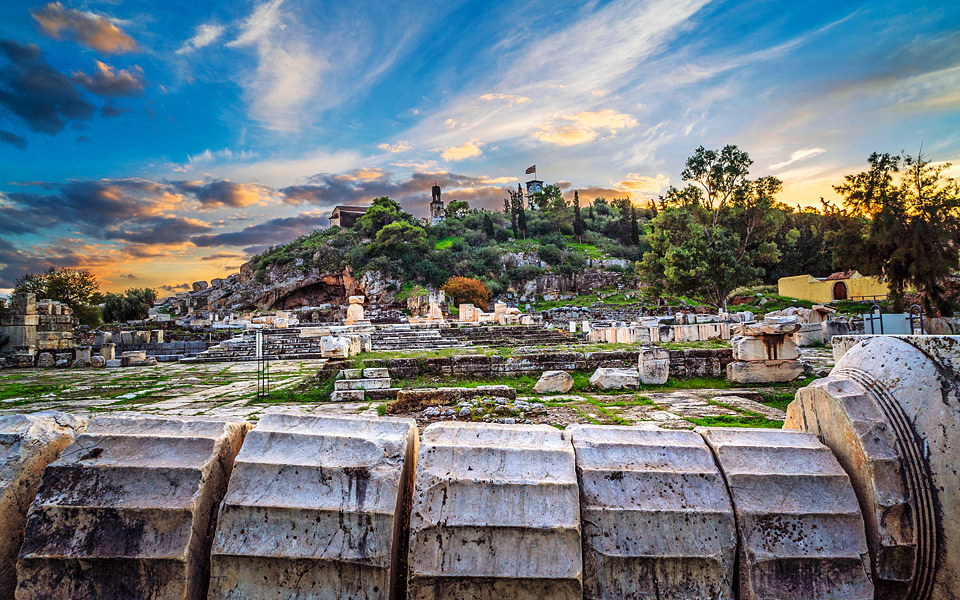Being picked as a European Capital of Culture for 2021 is the talk of the town in Elefsina, an industrial district west of Athens. The chatter on the streets and in the cafés revolves around new ideas for artistic projects, as the hype builds momentum to inspire, first and foremost, the residents to develop a closer bond with the town, with its natural assets and with art. The town’s distinction has also inspired all Greeks to hope that the endeavor will be a success and that Elefsina will become a role model, perhaps for other towns and cities in Europe as well.
A 40-minute drive west of Athens, modern-day Elefsina has gone from being one of the most sacred cities of antiquity and home to the Eleusinian Mysteries – which were at the center of one of the biggest religious cults at the time – to one of the most polluted and down-at-heel districts in the Attica region. Marred by unfettered industrial development, today it is a graveyard for abandoned factories and decommissioned ships and also one of the few municipalities in the region that agreed to host a refugee reception center. The fact that it was named one of Europe’s three cultural capitals for 2021 by the European Commission earlier his year caught many by surprise. For its residents, however, this distinction is seen as a just reward for their efforts in establishing the Aeschylia, which has become one of the most important theater festivals in Greece since it was founded in 1975.
Elefsina is built around the ancient Temple of Demeter, goddess of the harvest. According to mythology, Demeter arrived in the city of Eleusis disguised as an old woman as she searched for her beautiful daughter with Zeus, Persephone, who had been abducted by Pluto, the god of the underworld. When her divine identity was revealed, Demeter convinced the city’s king to build a temple in her honor, where she retired to mourn the loss of her daughter. Her sadness prevented the land from flourishing, prompting Zeus to intervene and force Pluto to release the maiden so she could spend two-thirds of the year on Earth and the remainder in the underworld. Wanting to thank the people of Eleusis for their hospitality, Demeter taught them how to worship and cultivate the land.
“A 40-minute drive west of Athens, modern-day Elefsina has gone from being one of the most sacred cities of antiquity and home to the Eleusinian Mysteries – which were at the center of one of the biggest religious cults at the time”
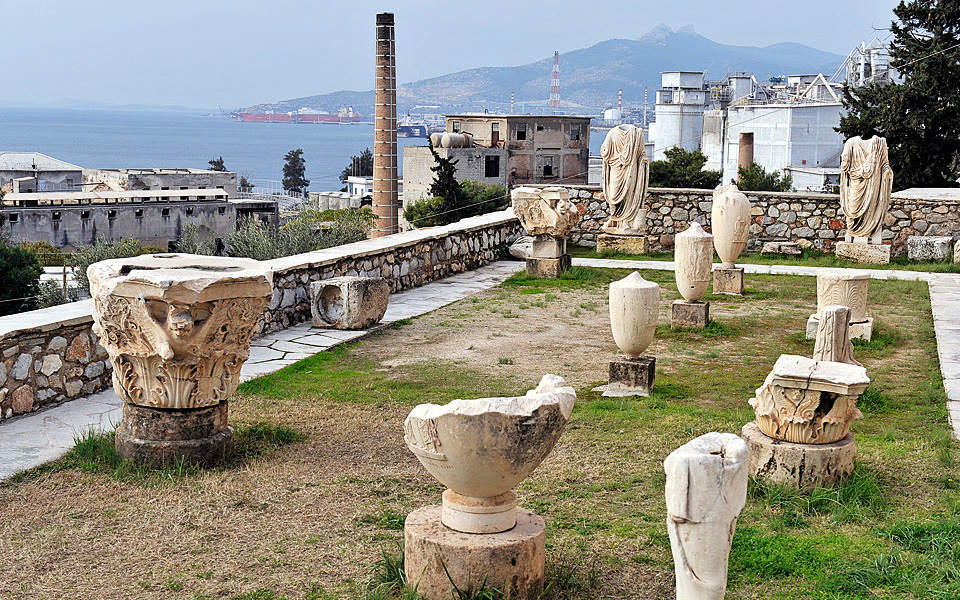
© Perikles Merakos
“To this day, the actual rites performed remain a mystery, as divulging the secrets of initiation was punishable by death.”
It was the people’s need to interpret the changing seasons and to banish the specter of death that gave rise to the Eleusinian Mysteries and made them one of most sacred and respected rites in all of ancient Greece. To this day, the actual rites performed remain a mystery, as divulging the secrets of initiation was punishable by death. Regardless, there was little point in describing this ultimate spiritual experience in words – it was so powerful that those initiated into it were believed to instantly become better people.
Yet even if you know nothing about the background to it, evidence of the myth is scattered all over modern-day Elefsina, like clues in a treasure hunt. If the archaeological site is the destination, you know you’re getting close from the street names – Demeter, Persephone and Pluto. One of the most popular café-bars in the area is Kykeon, named after the special brew of barley and pennyroyal consumed by the initiates to the cult. Another is named after Pericles, the famous 5th-century BC politician and general. Just walking around the town is its own form of sightseeing.
Excavations at Ancient Eleusis began in 1882 and uncovered the Telesterion, or ceremonies hall, yet new finds are unearthed every time a digging machine is put to work on some new construction site. Researchers say that the ancient city lies beneath the modern one and there is plenty of evidence to back the belief: marble columns and slabs wait for a day in the spotlight as they lay abandoned in church courtyards and even in a local hair salon, where a glass floor offers glimpses of an ancient bath amid tufts of snipped off hair.
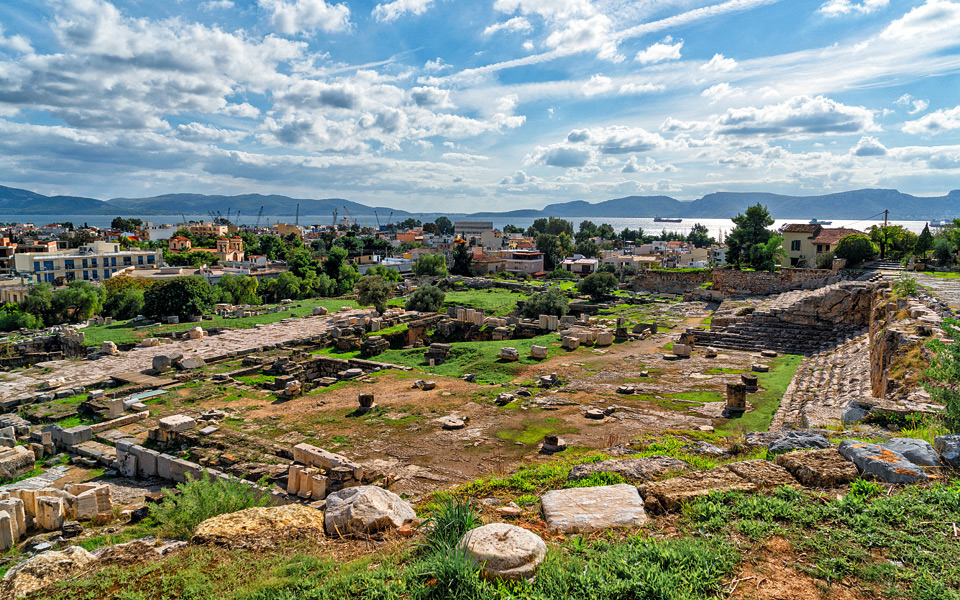
© Perikles Merakos
Elefsina is one of those places you’ll either love or hate. The panoramic view from the top of the hill at the archeological site and museum is both charming and depressing, as your gaze moves from the ancient ruins over to the silent shells of abandoned factories and to the smokestacks and the cranes at the port. The industrial frenzy began in the late 19th century with the arrival of the railway, which led to the mushrooming of factories producing cement, soap, alcohol, paint and, later steel. The shipyards expanded, too. In the 1960s, Elefsina was produced 40 percent of the country’s entire industrial output. “You couldn’t air your laundry outside. It rained soot and dust. Life was intolerable,” one old-timer remembers.
The town’s human geography was shaped mainly after 1922 with the influx of refugees from Asia Minor, who doubled its population. A new wave of migrants – this time from different parts of Greece – flooded the town after World War II as people from the decimated countryside sought work in the factories. Retired teacher Sotiria Mouriki-Douka, now aged 91, remembers a time when the students at the local school spoke Greek, Turkish and the Albanian dialect of Arvanitika. A melting pot of different cultures and mindsets, Elefsina cultivated a culture of hospitality from early on – its name, after all, stems from the Greek word for arrival, “elefsis.”
“I had 50 kids in my class, from the sons of factory managers to young refugees from Asia Minor,” remembers the teacher.
Iliriana Cekani Kassa, the Albanian woman who has looked after her for the past 25 years and whom the retired teacher regards as her star student, adds that she never experienced racism or intolerance. “In the afternoons, the people would gather in each other’s homes and front yards. There was a sense of community, regardless of where you came from. I learned Greek in the neighborhood, jotting down words in a notebook while drinking coffee,” she says.
As her Greek was not fluent enough to allow her to put her observations and memories to paper, Iliriana began taking photographs, becoming one of the many artists in Elefsina. Hara Efthymiopoulou, for example, works at her kiosk during the day and paints at night, showing her work at an annual exhibition held in the town. “There was little else to do but read and draw as I waited for customers in my tiny box,” she says, showing me a female figure she painted on old wooden kiosk door.
“A melting pot of different cultures and mindsets, Elefsina cultivated a culture of hospitality from early on – its name, after all, stems from the Greek word for arrival, ‘elefsis’.”
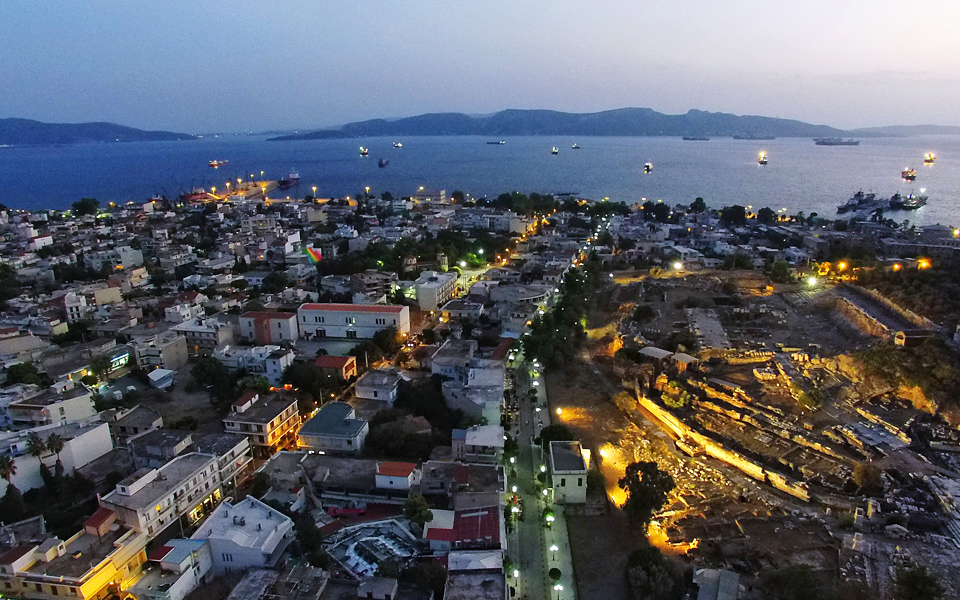
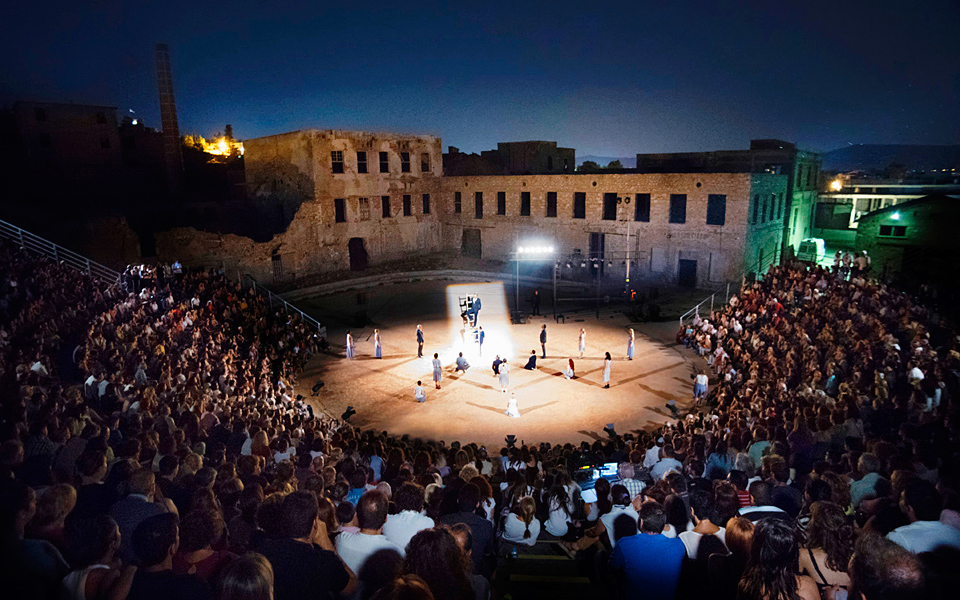
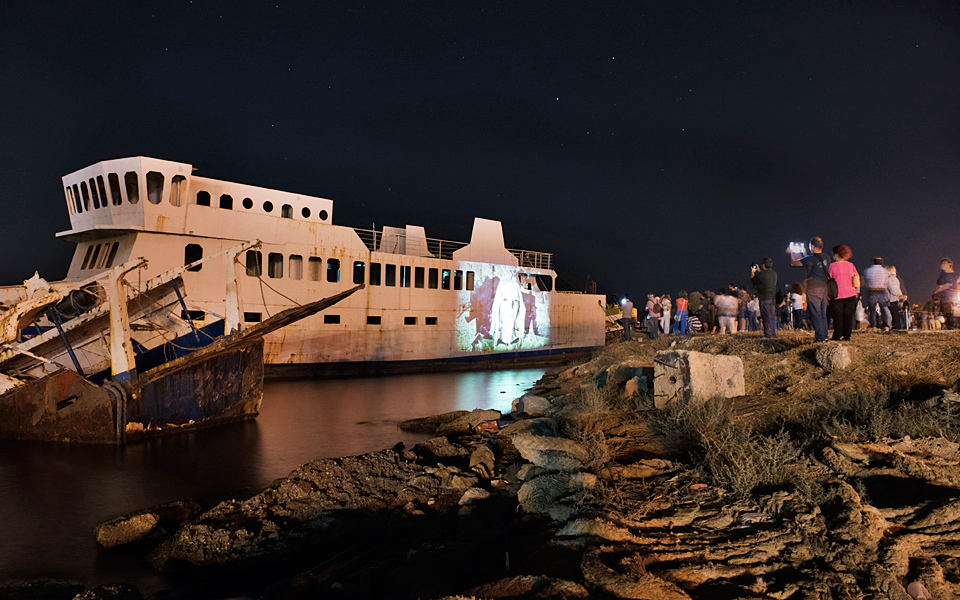
“The plans for Elefsina in the run-up to 2021 include major restorations of industrial buildings, as well as new public parks, cultural venues and institutions. ”
Elefsina is vibrant with art; it springs up everywhere, at every opportunity, with a kind of simplicity that appears to be so sorely lacking these days. A few years ago, one artist took the initiative to fill the old railway station with potted plants by asking locals to donate a bloom. In exchange, she painted their front yards, filling their homes with color.
The plans for Elefsina in the run-up to 2021 include major restorations of industrial buildings, as well as new public parks, cultural venues and institutions. Preparations for the candidacy began two years ago, after Elefsina was thrust into the limelight in 2014 when Italian artist Michelangelo Pistoletto created an in situ piece at the old olive oil mill for the Aeschylia Festival named “Third Paradise.” With his three circles of stones, the father of arte povera sought to express the need to redefine our relationship with nature and our feXllow humans. Indeed, the history of this beleaguered town appears very much an allegory for Europe.
“I believe that we won the competition because we understood exactly what it’s about,” says Konstantinos Kalesis, member of the outgoing Board of Directors of Eleusis 2021. “Elefsina addresses the issues that concern Europe, like development, social cohesion and, ultimately, prosperity. Humankind has experienced two major transitions so far: the agricultural and the industrial revolutions. Today we face the fresh challenge of finding a new model for sustainable development and we are presenting a town that, despite all its problems, is investing in culture.”
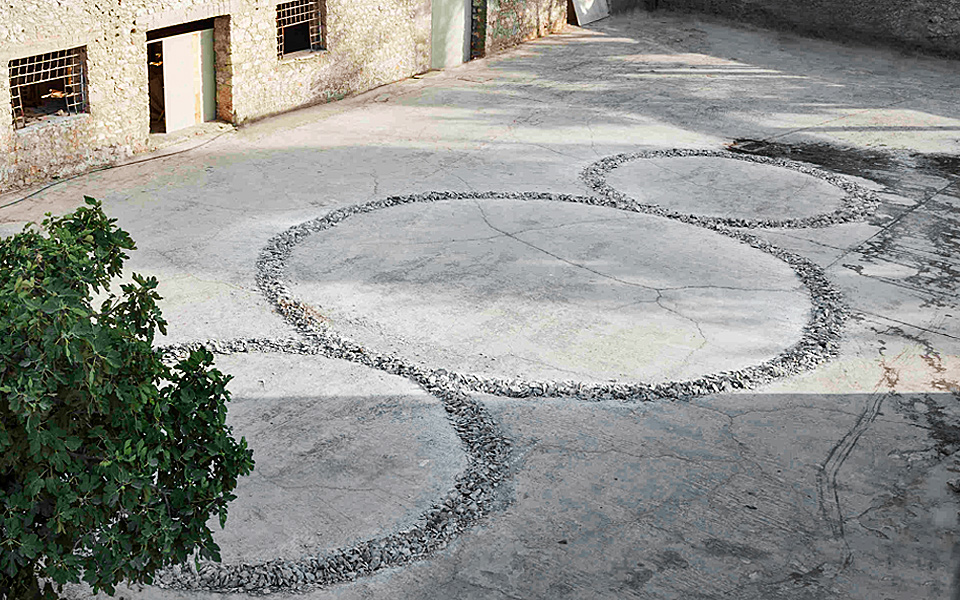
I personally can’t help but wonder whether art is really what is needed in a place inhabited almost exclusively by blue-collar workers and why the municipality is investing such a big part of its overstretched budget in culture. A meeting with Mayor Giorgos Tsoukalas answers most of my questions.
“It is necessary to give people who work very hard and cannot afford to travel to Athens often some quality of life in their spare time,” he says. “We are not just talking about a tourism revival. The issue at hand is how we can introduce a sense of culture into every facet of life, to transform both the town itself and its residents. It’s about improving our streets, introducing more spaces for pedestrians and bicycles, about respecting public space and our neighbors. It is even about the way that we welcome refugees. Our ambition is become a model town, to inspire residents to adopt new habits.”
With its myriad problems and the creative way it has chosen to address them, Elefsina has something to teach Europe in the face of its mounting challenges, as we all seek a way to the Third Paradise.
Elefsina is vibrant with art; it springs up everywhere, at every opportunity, with a kind of simplicity that appears to be so sorely lacking these days. A few years ago, one artist took the initiative to fill the old railway station with potted plants by asking locals to donate a bloom. In exchange, she painted their front yards, filling their homes with color.
The plans for Elefsina in the run-up to 2021 include major restorations of industrial buildings, as well as new public parks, cultural venues and institutions. Preparations for the candidacy began two years ago, after Elefsina was thrust into the limelight in 2014 when Italian artist Michelangelo Pistoletto created an in situ piece at the old olive oil mill for the Aeschylia Festival named “Third Paradise.” With his three circles of stones, the father of arte povera sought to express the need to redefine our relationship with nature and our fellow humans. Indeed, the history of this beleaguered town appears very much an allegory for Europe.
Australian music act Dead Can Dance wrote this song in order to promote Elefsina’s story and vision, with a video clip that was shot in the town.
“Elefsina is vibrant with art; it springs up everywhere, at every opportunity, with a kind of simplicity that appears to be so sorely lacking these days.”

